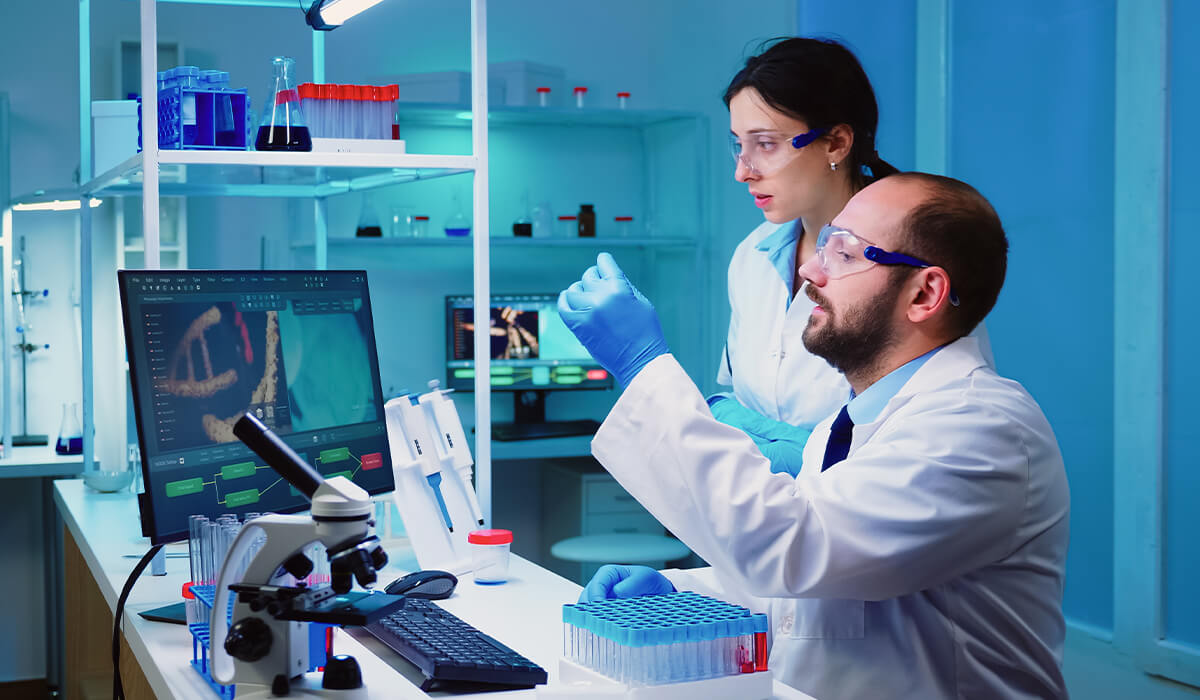Prosecution pathway for pharma & bio patents in india – part 1
The Indian pharmaceutical industry, often referred to as “the pharmacy of the world” is the third largest in the world consisting of largely generic pharmaceutical manufacturers. India supplies over 50% of global demand for various vaccines, 40% of generic demand in the US and 25% of all medicine in the UK. It is therefore only obvious that pharmaceutical patenting in India is of utmost importance not only to the local populace, but also for the world at large.
Unlike other fields of invention, prosecution of pharma patents and biotech related inventions before the Indian patent office can prove to be an arduous task for most Applicants. This two-part article takes a look at some of the most common objections cited by examiners at the Indian patent office in respect of biotech related inventions and pharmaceutical inventions and ways of tackling these objections. Two documents play a major role in this discussion:
- Guidelines for examination of biotechnology applications for patent (also referred to as the Biotech guidelines), published by the patent office in 2013; and
- Guidelines for examination of patent applications in the field of Pharmaceuticals, published in 2014.
In this part of the article, we exclusively focus on biotechnology-based inventions, common patentability objections and the guidelines framed in respect of these inventions.
Section 3 of the Indian Patents Act and non-patentability
Section 3 of the Indian Patents Act provides an exhaustive list of inventions that are considered non-patentable under the Indian patent law, these are:
Section 3(a): an invention which is frivolous, or which claims anything obviously contrary to well established natural laws;
Section 3(b): an invention the primary or intended use or commercial exploitation of which could be contrary public order or morality, or which causes serious prejudice to human, animal or plant life or health or to the environment;
Section 3(c): the mere discovery of a scientific principle or the formulation of an abstract theory or discovery of any living thing or non-living substances occurring in nature.
Section 3(d): the mere discovery of a new form of a known substance which does not result in the enhancement of the known efficacy of that substance or the mere discovery of any new property or new use for a known substance or of the mere use of a known process, machine, or apparatus unless such known process results in a new product or employs at least one new reactant.
Explanation. -For the purposes of this clause, salts, esters, ethers, polymorphs, metabolites, pure form, particle size, isomers, mixtures of isomers, complexes, combinations and other derivatives of known substance shall be considered to be the same substance, unless they differ significantly in properties with regard to efficacy.
Section 3(e): a substance obtained by a mere admixture resulting only in the aggregation of the properties of the components thereof or a process for producing such substance.
Section 3(f): the mere arrangement or re-arrangement or duplication of known devices each functioning independently of one another in a known way.
Section 3(h): a method of agriculture or horticulture.
Section 3(i): any process for the medicinal, surgical, curative, prophylactic, diagnostic, therapeutic or other treatment of human beings or any process for a similar treatment of animals to render them free of disease or to increase their economic value or that of their products.
Section 3(j): plants and animals in whole or any part thereof other than micro-organisms but including seeds, varieties and species and essentially biological processes for production or propagation of plants and animals.
Section 3(k): a mathematical or business method or a computer programme per se or algorithms.
Section 3(l): a literary, dramatic, musical or artistic work or any other aesthetic creation whatsoever including cinematographic works and television productions.
Section 3(m): a mere scheme or rule or method of performing mental act or method of playing game.
Section 3(n): a presentation of information.
Section 3(o): topography of integrated circuits.
Section 3(p): an invention which in effect, is traditional knowledge or which is an aggregation or duplication of known properties of traditionally known component or components.
Of the above listed exclusions, over 95% of all examination reports issued in respect of biotech and pharma inventions contain an objection under at least one of sections 3(d), 3(e), 3(i) or 3(j). These objections may be accompanied by other objections such as those under section 3(b), 3(c), 3(h) or 3(p).
Claims in Biotech inventions
According to the Guidelines for examination of biotechnology applications for patent and as is generally the case, Biotech related inventions often comprise claims related to one or more of the following subject matters:
- Polynucleotides or gene sequences (product and/or process).
- Polypeptides or protein sequences (product and/or process).
- Vectors (e.g., plasmids) (product and/or process).
- Gene constructs or cassettes and gene libraries.
- Host cells, microorganisms and stem cells (product and/or process), transgenic cells.
- Plants and animals tissue culture (product and/or process).
- Pharmaceutical or vaccine compositions comprising microorganisms, proteins, polynucleotides (product and/or process).
- Antibodies or antigen binding fragments thereof (monoclonal or polyclonal).
- Diagnostic kits and tests, and
- Diagnostic tests (products/process) such as a test for the detection of a mutation in a gene/protein which might be associated with a particular condition such as protein expression or a disease.
At the very outset it is important to note that objections under section 3 are rarely used alone and are almost always cited in conjunction with novelty and inventive step objections. If an Applicant can defend the novelty of the invention and address the inventive step requirement, the battle is as good as won.
Objections under section 3(d)
The primary objection in most examination reports issued in respect of biotech and pharmaceutical inventions, almost always includes an objection under section 3(d). Section 3(d) stipulates that an incremental invention, based upon an already known substance, having established medicinal activity shall be deemed to be treated as a same substance unless the invention demonstrates significantly improved efficacy with respect to that known compound.[1]
To overcome an objection under section 3(d), the Applicant must establish improved efficacy in respect of the invention in question. The Hon‘ble Supreme Court of India in Novartis AG Vs. Union of India[2] has held that “in the case of medicines, efficacy means ― therapeutic efficacy and physico-chemical properties of substances do not meet the requirement of ―therapeutic efficacy” . In line with the aforementioned, an Applicant whose invention has been objected under section 3(d) may be able to transverse the objection by submitting available experimental data to demonstrate increased or improved “efficacy”. It is pertinent to note that mere increased bioavailability alone may not necessarily lead to enhanced efficacy and the same must therefore by proved by submitting adequate research data.
As mentioned earlier, section 3(d) is rarely used alone and is almost always in combination with objections relating to novelty and obviousness. Therefore, if the applicant is able to establish novelty of the invention, section 3(d) is rendered moot since it does not apply to substances “not known”.
Objections under section 3(e)
Objection sunder section 3(e) are quite often directed to inventions claiming compositions. As provided under section 3(e), a substance obtained by a mere admixture resulting only in the aggregation of the properties of the components thereof or a process for producing such substance is not patentable.
In order to overcome objections under section 3(e) an applicant must establish synergistic effect. In general, all the substances which are produced by mixing components or a process of producing such substances should satisfy the requirement of synergistic effect in order to be patentable. An admixture resulting in synergistic properties is not considered as mere admixture. Hence, substances like soaps, detergents, lubricants, etc are considered patentable.
Objections under section 3(i)
Section 3(i) excludes the following from patentability:
- Medicinal methods, for example, a process of administering medicines orally, or through injectables, or topically or through a dermal patch
- Surgical methods, such as a stitch-free incision for cataract.
- Curative methods, such as a method of cleaning plaque from teeth.
- Prophylactic methods, such as a method of vaccination.
- Diagnostic methods, such as identifying the nature of a medical illness by investigating its history and symptoms and by applying tests.
- Therapeutic methods including methods for prevention and treatment of diseases.
- Any method of treatment of animal to render them free of disease or to increase their economic value or that of their products and so on.
Although the patent office does outrightly reject any claim directed towards a method of treatment, in some cases claims involving an “in-vitro” method have been allowed. It is important to note that exclusions under section 3(i) do not include surgical, therapeutic or diagnostic kits, instrument or apparatuses. Further, application of substances to the body for purely cosmetic purposes is not considered therapy and therefore patentable subject matter. Overcoming objections under 3(i) are largely difficult. To add to the problem, the provisions under the patents act, do not allow an applicant to change a method of treatment claim to any other forms such as a product or composition claim. It is therefore best to include at least one product claim at the very onset in the patent specification for inventions which are likely to be objected under section 3(i) of the Act.
Objections under section 3(j)
According to Section 3(j) of the Act, plants and animals in whole or any part thereof including seeds, varieties and species and essentially biological processes for production or propagation of plants and animals are not patentable inventions. The only exception to this rule is micro-organisms subject to the condition that the micro-organisms are not naturally occurring and have been genetically modified in-vitro. Claims relating to essential biological processes of growing plants, germination of seeds, of development stages of plants and animals, naturally occurring antigens / antigen binding fragments, isolated antibody, host cells, cell lines comprising novel nucleic acids, etc are not allowed under section 3(j). Although arguments may be made in support of these biological entities by establishing that the invention being claimed is a direct result of human skill and ingenuity and cannot be obtained without extensive application of these skills and efforts, acceptance of these arguments is solely at the discretion of the examiner.
Overcoming objections under section 3 of the Patents Act, while challenging are not entirely impossible. Although the final outcome of the prosecution proceedings depend on the strategies adopted, the strength of the invention also plays an important role. It is important for applicants to note that it may be a wiser option to let go of some of the claims in the application without prejudice, rather than risk the refusal of the entire application. In the next part of our article we will specifically focus on the prosecution of pharmaceutical patents and ways of overcoming objections aimed at such inventions.




